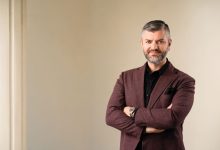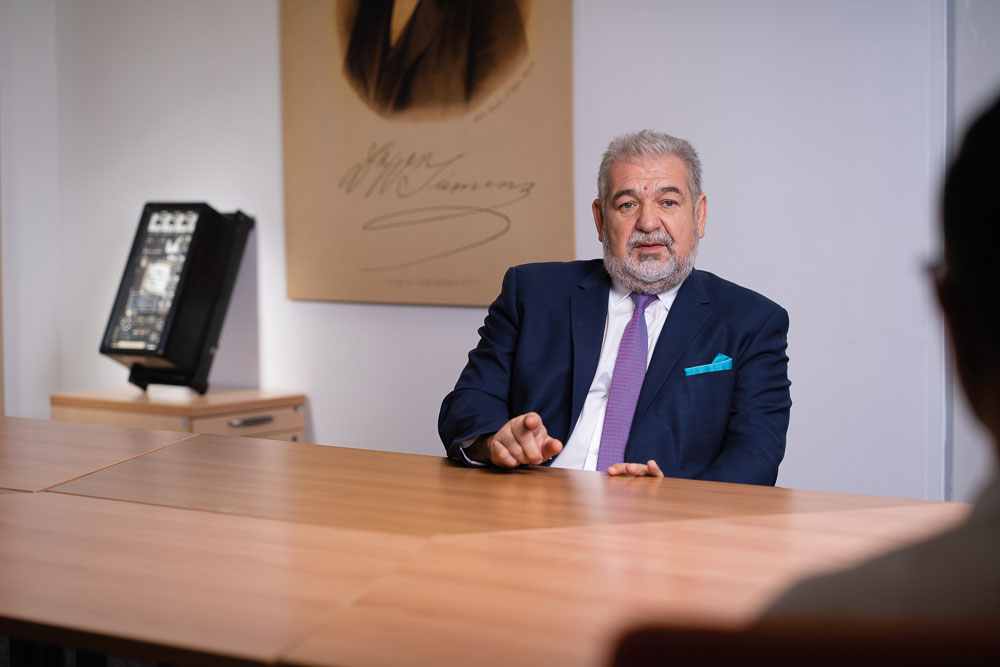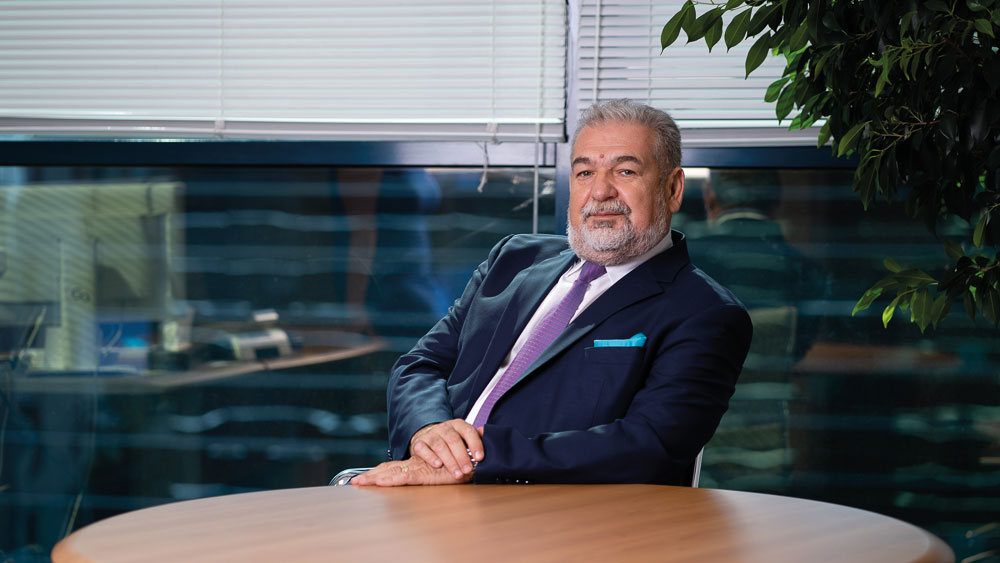Petru Rușeț: Siemens Energy, Ready To Power A Sustainable Future
Siemens Energy Romania, the new independent company to activate exclusively in the energy sector, was set up this year, in March.
We have talked with Petru Rușeț, Managing Director of Siemens Energy Romania, about the situation of the regional energy market, trends in the field at global level, innovative technological solutions and plans for the future of the company.
Dr. Eng. Petru Rușeț is the Managing Director of Siemens Energy Romania. With a 30-year career in the energy sector, he had multiple management roles in some of the most important companies in the field, such as: Transelectrica SA, Electrica SA and Siemens SRL.
His vast experience in the field of energy, during which he coordinated complex projects, recommends Dr. Eng. Petru Rușeț as a specialist in energy sector and management.
Dear Mr. Petru Rușeț, you have been working for over 30 years in this complex and interconnected landscape of energy and you have an accurate and extensive knowledge of the profile market in Romania and not only. How does the situation in this sector of the economy currently look like from the specialist’s perspective?
Petru Rușeț: The current energy market in Romania is influenced by the need for investments in improving the quality of transport and distribution services.
In Europe, the need to interconnect energy transport systems led to a new type of projects such as: cross- border interconnection, unified transport and distribution markets, smart metering.
We will see this evolution also in Romania, generating investment opportunities at least for the next 10 years.
On the other hand, the project of common interest and economic stimulus will reactivate the renewable energies and conventional generation projects.
Another important element to stimulate investment is the strategic decision to reduce carbon emissions in energy generation. Reducing the production of energy from fossil resources (coal) will boost the use of gas as a transition fuel, in combination with the use of hydrogen.
How did Siemens Energy come into being and what is the object of activity of this new company? What does its portfolio include?
Siemens Energy in figures and data at global level
Siemens Energy covers a unique portfolio, in one company: Transmission, Power Generation and Industrial Applications (formerly Oil & Gas), featuring a great range of solutions across the energy value chain. Also, we are developing a New Energy Business portfolio of forward-looking technologies in the field of decarbonization: generating ‘green’ hydrogen from renewable energy. Siemens Gamesa Renewable Energy completes the range of technologies and services for a sustainable future.
What are the strengths & benefits provided by Siemens Energy?
Petru Rușeț: The world is facing a great challenge: to satisfy growing demand for electricity and at the same time protect our planet.
Siemens Energy is committed to providing solutions for sustainable, reliable, and affordable energy possible.
With a clear customer focus, we are developing innovative technologies, essential for building the energy systems of the future.
We energize society. That’s our purpose.
What flagship projects are currently found on the agenda of Siemens Energy Romania?
Petru Rușeț: We are a very young company, with an extensive expertise.
With our team of around 200 skilled specialists, we will continue the projects of updating the Romanian energy network with substations, transformers and other state-of-the art technologies for the national TSO and all major DSO’s in the market. As well, we will be part of the energy transition in Romania in area of generation with new fuels, industrial solutions, or renewables.
One of the most important resources in the energy mix of the future is identified by experts as being hydrogen. Given that the switch of the center of gravity from oil to energy is a complex and difficult process, the development of energy industry businesses in this direction will require both planning and a rigorous coordination. What are the concerns of Siemens Energy in this field?
Petru Rușeț: The company is constantly investing in developing new technologies.
On this mission of finding alternatives to coal-based energy production, Siemens Energy is investing heavily in R&D for hydrogen-based energy generation.
At this moment, we already developed commercial solutions for production of green hydrogen (e-Hydrogen). And we also already offer complete and tested solutions for energy production based on hydrogen and hydrogen mixed with methane gas.
Electricity storage is one of the new trends of the major energy companies, against the backdrop of energy transition. According to experts, large-scale use of batteries will be a usual practice in the future decades. How does Siemens Energy see this trend?
Petru Rușeț: Energy storage is one of the most important tools in the transition to a CO2-neutral economy, bringing stability to the renewables network and keeping a balance between production and consumption.
Siemens is the first company to install the first MW of storage in the Romanian energy sector.
The solution has been in commercial operation for more than 2 years and, certainly, further development can be based on a verified technology.
Another important element is ‘green’ hydrogen, that connects the renewable energy production to the industrial consumption. The production of green hydrogen is based on electrolysis, which separates water into hydrogen and oxygen, using electricity. The process is environmentally friendly and reacts flexibly to the fluctuation of energy production from the sun and wind, contributing to the integration of renewable energy in all sectors.
In Romania, the only piece missing from the renewables storage puzzle is the legislation to support investments in promoting these solutions and to create a local customized business model for energy storage.
Siemens, a pioneer company in digitalization, constantly confirms the approach for building a world in which smart solutions will form the basis of the future energy network. How does the involvement of Siemens Energy materialize in this regard?
Petru Rușeț: Digitalization offers numerous opportunities. Data transparency can help us better understand the complexity of the grid, support proactive maintenance, and improve productivity.
For example, the sensors from the wind turbines are transmitting real time information on wind condition and the equipment technical parameters. This large amount of data is grouped in the Siemens cloud – MindSphere – and algorithms can be used for optimizing performance or failure prevention.
What is more exciting is that the MindSphere IoT operating system allows data to be transferred between the process model and the actual process.
The process model is a virtual copy of the actual process, a digital twin that optimizes, simulates, and utilizes process design data throughout its lifecycle.
Using MindSphere, our customers will be able to test and develop new applications and business models.
Transforming Europe into the first climate neutral continent by 2050 is the objective that underlies the European Green Deal. Use of energy from renewable sources has numerous potential benefits, including a reduction of greenhouse gas emissions, diversification of energy supply and reduction of reliance on fossil fuel markets. In your opinion, will renewable energy find a place in the long run in the global energy mix?
Petru Rușeț: I believe the future energy systems will be based on renewable energy.
The challenge will be to find solutions that ensure network stability to the energy generated from wind and solar sources.
Power-to-X technologies will offer multiple opportunities to decarbonize energy across all sectors, by helping to store volatile renewable energy with the use of e-Hydrogen.
How does the COVID-19 crisis impact the company? What are the next steps to help ensure full recovery?
Petru Rușeț: Siemens Energy Romania took the situation very seriously and appointed a local task force to manage the situation from the early stages of the health crisis. All necessary measures were taken to ensure the safety of our team, partners, and suppliers, following strictly all regulations.
Although we have faced some discontinuities in the supply chain, no major delays were registered in our projects.
We are constantly monitoring the situation very carefully, on local and global level. The key element is flexibility, we need to adapt in a rapid manner to the next developments.
Of course, this crisis reminded us how important digitalization is, and also a stable energy network. And most of all, how important the people are, doing a great job in unprecedented circumstances.
I would like to thank all of them, and especially my colleagues and our partners that where present in all critical locations to ensure a continuous power supply.
Thank you for keeping the lights on!
What plans does Siemens Energy Romania pave for the near future and what will be the priority directions of development of the company? Do you also consider listing on the stock exchange?
Petru Rușeț: On 7th of May 2019 Siemens AG announced the spin-off of Siemens’ Gas and Power (GP).
GP – comprising the company’s oil and gas, power generation, power transmission and related services businesses – will gain independence and entrepreneurial freedom through the carve-out, subsequent spin-off and public listing.
The new GP group, named Siemens Energy, comprises Siemens’ majority stake in the renewable energies company Siemens Gamesa Renewable Energy (SGRE).
Siemens Energy is capable of providing world-class products, solutions and services across significant parts of the energy value chain.
SIEMENS SRL – as a first step – transferred its GP business in Romania to Siemens Energy SRL by way of a demerger, on March 1, 2020.
An extraordinary shareholders’ meeting in July 2020 paved the way for the spin-off and subsequent public listing on September 28, 2020.
Although Siemens will deconsolidate Siemens Energy, Siemens AG will initially remain a non-controlling anchor shareholder in Siemens Energy AG with a 35.1% shareholding. Additionally, the Siemens Pension Trust e.V. will hold a 9.9% stake in Siemens Energy AG.
With the strategic and operational development of Siemens Energy AG and Siemens AG, Siemens AG intends to reduce its stake in Siemens Energy AG significantly within 12 to 18 months after the Spin-off taking effect.
Siemens is committed to further support Siemens Energy, for example, through the professional services of Siemens’ Financial Services, the strong sales network of the Siemens Regions and the licensing of the powerful Siemens brand.
Siemens Energy aims to be a trusted partner in navigating the increasingly complex energy transformation by offering fully integrated world class products, solutions and services in a unique focused set up along the entire energy value chain for benchmark energy systems – today and tomorrow.
[1] Revenue figures based on FY 2019, as reported
[2] Employee figures as of March 2020
[3] Orders figures based on FY 2019, as reported
[4] Backlog figures based on FY 2019, as reported









